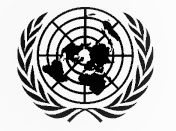
Download PDF
English
Overview
When the OPCW-UN Joint Investigative Mechanism (JIM) was established by Security Council resolution 2235 in August 2015, it was given the mandate to identify, to the greatest extent feasible, the perpetrators of the use of chemicals as weapons in the Syrian Arab Republic. The JIM’s mandate for attribution of responsibility was a unique undertaking in the context of past efforts by both the United Nations and the OPCW to investigate allegations of the use of chemical weapons.
Accordingly, after the expiration of the JIM’s mandate in 2017, there was interest in conducting a lessons-learned exercise to distill the lessons from the experience of the JIM, as is frequent practice within the United Nations after the conclusions of missions and programmes. UNODA was fortunate to receive support for a lessons-learned project from the Governments of Canada and Switzerland, whose generous financial contributions made the project possible.
UNODA is pleased to share the final report of the JIM lessons-learned project. The project provided an opportunity to reflect on the recommendations that could benefit future such investigations and help to enhance common understanding of what can be done to establish an effective and credible mechanism to identify those responsible for the use of chemical weapons.
While any future such mechanism would need – and should be enabled to the fullest extent – to make its own decisions on the topics addressed in this report based on the requirements of its mandate and individual case information, UNODA hopes that the lessons and recommendations presented in this report could serve as helpful guidance. UNODA also hopes that these recommendations could serve to help the international community confront the challenges to international peace and security posed by the use of chemical weapons and to restore respect for the global norm against chemical weapons use.
Product Details
Publication date: 6 October 2020

